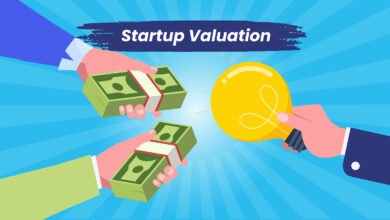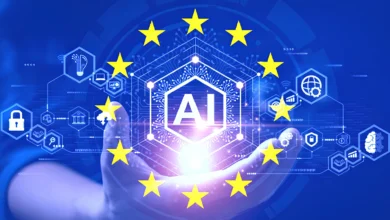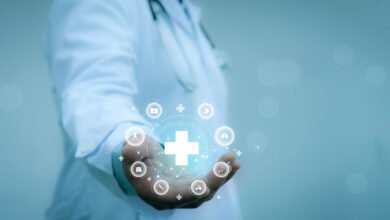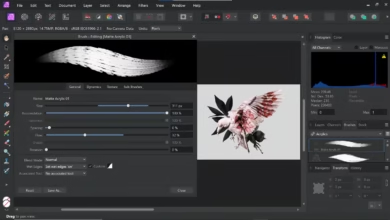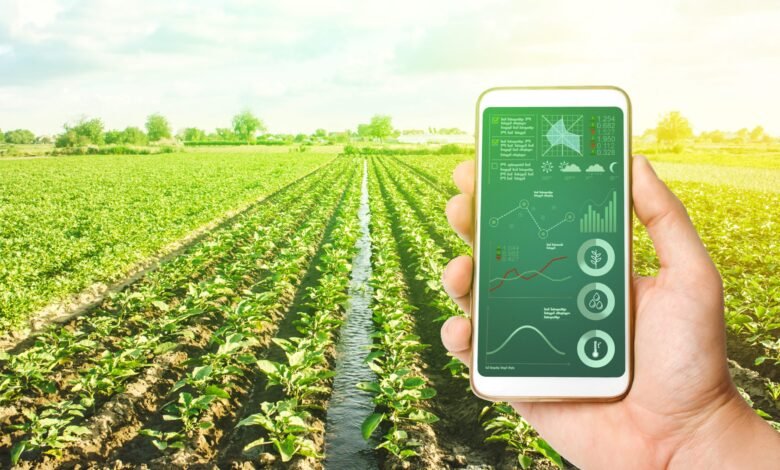
The agricultural sector stands at the precipice of a technological revolution that promises to transform traditional farming into an intelligent, data-driven enterprise. IoT in agriculture has emerged as a game-changing paradigm, leveraging smart sensors and connected devices to optimize every aspect of farming operations. As global populations surge toward 10 billion by 2050, the pressure to produce more food with fewer resources has never been more acute. Precision farming, powered by the Internet of Things, offers a compelling solution to this existential challenge by enabling farmers to monitor, analyze, and respond to crop conditions with unprecedented accuracy.
The integration of smart sensors for precision farming represents far more than mere technological advancement—it embodies a fundamental shift in agricultural philosophy. Traditional farming relied heavily on intuition, experience, and generalized practices applied uniformly across entire fields. In contrast, IoT-enabled agriculture facilitates granular, site-specific management where every square meter receives exactly what it needs, when it needs it. This transformation yields remarkable benefits: water conservation through intelligent irrigation, reduced chemical usage via targeted application, enhanced crop yields through optimal growing conditions, and substantial cost savings from resource efficiency.
The precision agriculture market has experienced explosive growth, with valuations reaching $8.34 billion in 2024 and projections suggesting expansion to $29.22 billion by 2033—reflecting a compound annual growth rate of approximately 15%. This financial momentum underscores the agricultural industry’s recognition that IoT smart sensors are not optional luxuries but essential tools for competitive, sustainable farming. From soil moisture monitors embedded in fields to atmospheric sensors tracking microclimates, from drone-mounted imaging systems to automated weather stations, agricultural IoT devices generate continuous streams of actionable data that inform critical decisions.
However, implementation challenges persist. Many farmers, particularly in developing regions, face barriers including high initial costs, technical complexity, limited connectivity infrastructure, and insufficient digital literacy. Additionally, concerns about data privacy, vendor lock-in, and system interoperability require careful navigation. Despite these obstacles, the trajectory remains unmistakable: smart agriculture powered by IoT technology will define farming’s future. This article explores the technologies, applications, benefits, and challenges shaping this agricultural transformation, providing comprehensive insights into how smart sensors and precision farming methodologies are cultivating a more productive, sustainable, and resilient food production system.
IoT in Agriculture
What is Agricultural IoT
IoT in agriculture refers to the network of interconnected physical devices, sensors, software, and communication technologies that collect, exchange, and analyze agricultural data. These smart farming systems create a digital ecosystem where physical farming operations generate real-time information accessible to farmers through smartphones, tablets, or computers. The fundamental architecture comprises three layers: sensing devices that monitor environmental and crop parameters, connectivity infrastructure transmitting data to processing centers, and analytical platforms transforming raw data into actionable insights.
Agricultural IoT solutions differ from conventional information technology in their emphasis on physical world integration. Smart sensors deployed throughout farms measure tangible variables—soil composition, moisture levels, temperature fluctuations, humidity patterns, light intensity, and nutrient concentrations. This physical data, when aggregated and analyzed, reveals patterns invisible to human observation, enabling optimizations impossible through traditional methods.
Core Components of IoT Agricultural Systems
The IoT agriculture ecosystem comprises several essential components working synergistically. Smart sensors form the foundation, serving as the eyes and ears of the system. These devices range from simple temperature monitors to sophisticated multispectral cameras capturing crop health indicators. Soil sensors measure moisture content, pH levels, electrical conductivity, and nutrient availability, while weather sensors track rainfall, wind speed, solar radiation, and atmospheric conditions.
Connectivity infrastructure represents the circulatory system, moving data from the field to the cloud. Technologies include cellular networks (4G/5G), low-power wide-area networks (LoRaWAN, Sigfox), WiFi, and emerging satellite internet solutions. The choice depends on farm size, location, budget constraints, and data transmission requirements. Remote farms often rely on LoRaWAN or satellite connectivity, while operations near urban areas leverage cellular networks.
Cloud computing platforms process and store the enormous data volumes that IoT sensors generate. These platforms employ artificial intelligence and machine learning algorithms to identify patterns, predict outcomes, and recommend actions. Analytics transform raw sensor readings into comprehensible visualizations—color-coded field maps showing moisture variations, growth trajectory charts, pest infestation alerts, and harvest timing recommendations.
User interfaces—mobile applications and web dashboards—complete the system, presenting insights in farmer-friendly formats. Modern precision agriculture software provides intuitive controls allowing farmers to monitor multiple fields simultaneously, receive alerts about critical conditions, and remotely control irrigation or other automated systems.
Evolution and Market Growth
Precision farming technology has evolved rapidly over recent decades. Early adoption focused on GPS-guided tractors and basic yield monitoring. The proliferation of affordable sensors, improved connectivity, and powerful cloud computing capabilities has democratized smart agriculture, making sophisticated tools accessible beyond large industrial operations.
Market statistics illustrate this momentum. The U.S. precision farming market reached $3.86 billion in 2024 and is projected to grow to $13.69 billion by 2034, while the global precision agriculture market stood at $8.34 billion in 2024 with expectations to reach $29.22 billion by 2033. This growth trajectory reflects increasing farmer adoption, technological maturation, and recognition that IoT-driven agriculture delivers tangible return on investment through enhanced productivity and resource conservation.
Types of Smart Sensors in Precision Farming
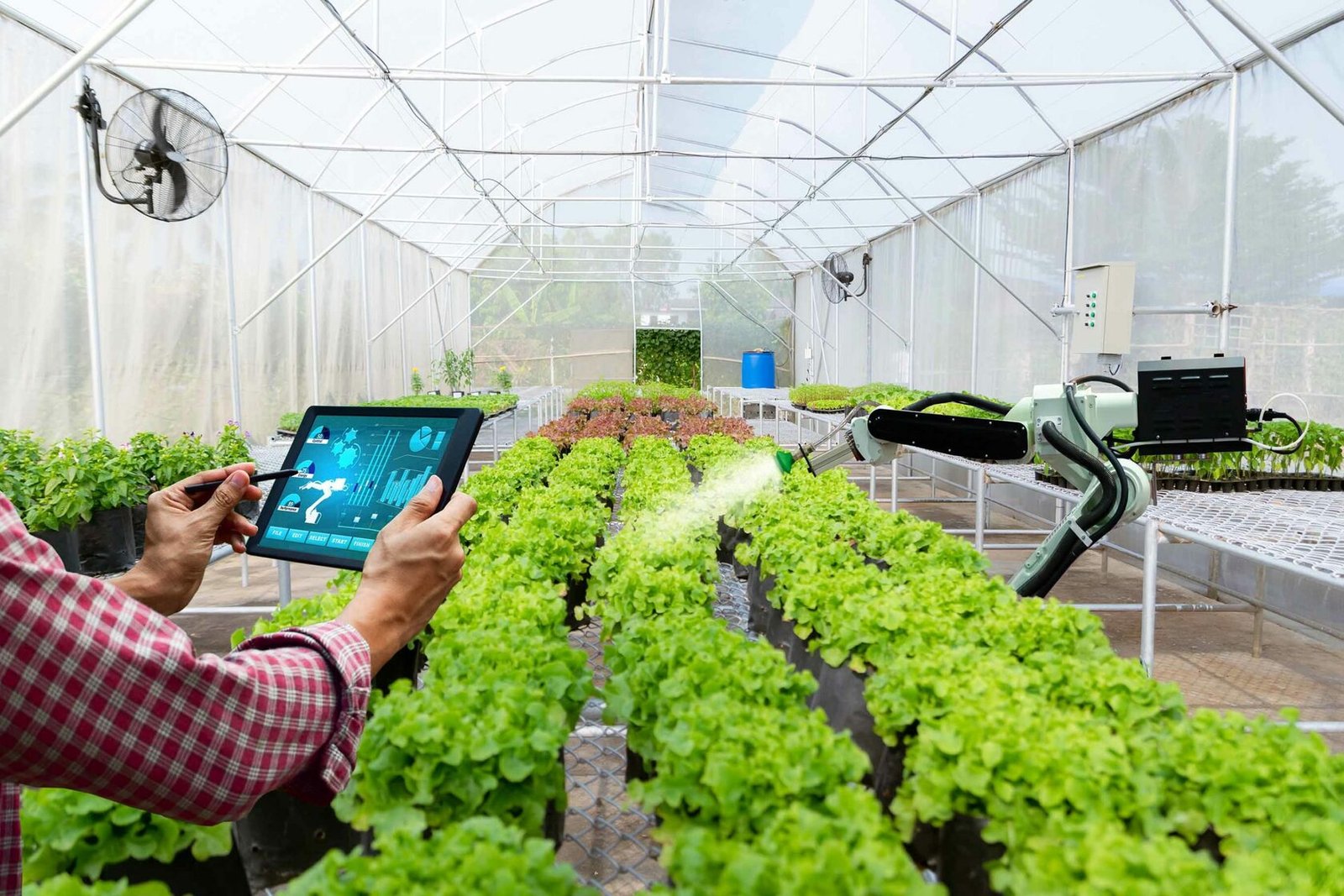
Soil Monitoring Sensors
Soil sensors constitute perhaps the most critical category of agricultural IoT devices. These instruments measure parameters fundamental to plant health and growth. Soil moisture sensors determine water content at various depths, enabling precise irrigation scheduling that eliminates both water stress and wasteful over-watering. Capacitance-based sensors measure dielectric permittivity influenced by moisture levels, while tensiometer-based devices directly measure soil water potential.
Soil nutrient sensors assess nitrogen, phosphorus, potassium, and micronutrient concentrations, guiding fertilization decisions. Traditional soil testing required laboratory analysis of physical samples—a time-consuming, expensive process yielding infrequent data points. Modern IoT soil sensors provide continuous monitoring, revealing nutrient dynamics as plants consume resources throughout growing seasons. This real-time visibility enables variable-rate fertilization where different field areas receive customized nutrient applications based on actual needs rather than uniform blanket treatments.
pH sensors measure soil acidity or alkalinity, crucial factors affecting nutrient availability and microbial activity. Salinity sensors detect salt accumulation potentially toxic to crops. Temperature sensors buried at various depths track soil thermal conditions influencing germination, root development, and microbial processes. The aggregation of these measurements creates comprehensive soil profiles enabling farmers to optimize conditions for specific crops.
Weather and Climate Monitoring Systems
Weather sensors provide hyperlocal meteorological data far more accurate than regional forecasts. On-farm weather stations measure temperature, humidity, barometric pressure, rainfall, wind speed and direction, solar radiation, and leaf wetness. This granular data proves invaluable for multiple applications. Irrigation controllers integrate rainfall data, reducing or eliminating watering when natural precipitation meets crop needs. Disease prediction models analyze temperature, humidity, and leaf wetness patterns—conditions favoring pathogen development—triggering preventative fungicide applications before infections establish.
Frost prediction systems monitor temperature trends, alerting farmers to impending freezing conditions threatening tender crops. Timely warnings enable protective measures like frost blankets, wind machines, or irrigation (which releases latent heat as water freezes). Evapotranspiration calculations combining temperature, humidity, wind, and solar radiation data help determine crop water consumption rates, optimizing irrigation scheduling.
Emerging microclimatic sensors recognize that conditions vary significantly across farms due to topography, vegetation, and structures. Multiple sensor stations throughout large operations capture these variations, enabling site-specific management responding to actual local conditions rather than farm-average assumptions.
Crop Health and Growth Monitoring Sensors
Crop monitoring sensors assess plant health, growth stages, and stress indicators. Optical sensors measure light reflectance at various wavelengths, calculating vegetation indices like NDVI (Normalized Difference Vegetation Index), correlating with chlorophyll content and plant vigor. Healthy vegetation absorbs visible light for photosynthesis while reflecting near-infrared radiation. Stressed plants exhibit different spectral signatures, enabling early problem detection before visual symptoms appear.
Multispectral and hyperspectral imaging systems mounted on drones, satellites, or ground-based platforms capture detailed crop canopy information. These technologies identify nitrogen deficiencies, water stress, pest damage, and disease infections across entire fields rapidly. Thermal imaging sensors detect temperature variations indicating irrigation problems, root diseases, or pest infestations affecting plant transpiration.
Emerging plant sensor technologies directly monitor physiological processes. Stem diameter sensors measure plant water status through expansion and contraction cycles. Sap flow sensors quantify transpiration rates. Fruit growth sensors track development patterns, optimizing harvest timing. While less common than environmental sensors, these plant-attached devices provide unprecedented insights into crop responses to growing conditions.
Livestock Monitoring Solutions
IoT sensors extend beyond crops to livestock management. Animal wearables—collars, ear tags, or leg bands—track location, activity levels, rumination patterns, and body temperature. GPS-enabled collars monitor grazing patterns, ensuring animals utilize pastures efficiently while preventing overgrazing of sensitive areas. Activity sensors detect behavioral changes indicating illness, injury, or reproductive status. Cows approaching calving exhibit characteristic movement patterns; detecting these changes enables timely intervention.
Rumination monitoring assesses digestive health—reduced rumination often precedes illness. Early detection allows treatment before conditions worsen. Temperature sensors identify fever or hypothermia requiring attention. Collectively, these livestock IoT systems improve animal welfare, reduce mortality, optimize breeding programs, and enhance productivity through data-driven herd management.
Environmental and Greenhouse Sensors
Controlled environment agriculture, leveraging greenhouse sensors, achieves remarkable precision. Climate control sensors monitor temperature, humidity, CO2 concentration, and light levels—parameters directly manageable in enclosed spaces. Automated systems adjust heating, cooling, ventilation, shading, and supplemental lighting, maintaining optimal conditions regardless of external weather.
Hydroponic and aeroponic sensors measure nutrient solution pH, electrical conductivity (indicating dissolved nutrient concentrations), dissolved oxygen, and temperature. Precise control over nutrient delivery maximizes plant growth while minimizing waste. Light sensors ensure crops receive appropriate photoperiods and light intensities for their growth stages, particularly important for controlled-environment leafy greens and herbs.
Key Applications of IoT and Smart Sensors in Agriculture
Precision Irrigation Management
Smart irrigation systems represent one of the most impactful IoT agriculture applications. Traditional irrigation relied on timers or manual observation—methods frequently resulting in over-watering (wasting water and promoting diseases) or under-watering (stressing crops and reducing yields). IoT-enabled irrigation combines soil moisture sensors, weather data, and crop water requirement models, delivering precisely calibrated water volumes.
Variable rate irrigation systems divide fields into management zones based on soil types, topography, and crop conditions. Each zone receives customized watering matching its specific requirements. This approach conserves water—a critical consideration given agriculture’s 70% share of global freshwater consumption—while optimizing crop performance. Studies demonstrate water savings of 25-50% compared to conventional irrigation, with simultaneous yield improvements from better moisture management.
Drip irrigation systems integrated with IoT controls automate watering based on real-time soil moisture readings, weather forecasts, and evapotranspiration estimates. When sensors indicate adequate moisture or rain forecasts predict precipitation, the system delays irrigation. Conversely, during hot, dry periods with high evapotranspiration, watering frequency and duration increase. This dynamic responsiveness, impossible with static timer-based systems, significantly improves water use efficiency.
Soil Health and Nutrient Management
Precision nutrient management powered by soil sensors transforms fertilization from generalized applications to targeted interventions. Variable rate fertilizer applicators guided by IoT soil data adjust application rates as equipment traverses fields, delivering more nutrients where deficiencies exist and reducing amounts in adequate areas. This precision prevents over-fertilization—an economic waste and environmental hazard, causing nutrient runoff polluting waterways.
Soil health monitoring extends beyond immediate nutrient levels to long-term sustainability indicators. Sensors tracking organic matter content, microbial activity, compaction, and structure provide insights into soil vitality trends. Declining organic matter or increased compaction trigger management adjustments—crop rotation modifications, cover crop implementations, or reduced tillage practices restoring soil health.
Real-time monitoring enables responsive management. If nitrogen sensors detect deficiencies during critical growth stages, side-dress applications provide supplemental nutrients exactly when needed. This precision timing improves nutrient use efficiency—plants absorb applied fertilizers rather than losing them to leaching or volatilization—while maintaining optimal growth conditions.
Pest and Disease Detection and Management
IoT pest monitoring systems employ various sensing technologies for early problem detection. Camera traps with image recognition algorithms identify pest species and estimate populations. Acoustic sensors detect insect sounds indicating infestation severity. Pheromone traps equipped with sensors automatically count captured pests, providing real-time population data informing treatment decisions.
Disease detection systems analyze environmental conditions, crop imaging data, and pathogen-specific sensors, predicting infection risks. When conditions favor disease development—appropriate temperature, humidity, and leaf wetness duration—farmers receive alerts recommending preventative fungicide applications. This proactive approach prevents epidemics while minimizing chemical usage through strategic, timely treatments rather than calendar-based spraying schedules.
Integrated pest management (IPM) frameworks leverage IoT data, establishing treatment thresholds based on pest populations and crop vulnerability stages. Interventions occur only when monitoring indicates populations exceeding acceptable levels—the point where treatment costs prove justified by prevented damage. This data-driven approach reduces pesticide use, lowering costs and environmental impact while maintaining effective pest control.
Yield Monitoring and Harvest Optimization
Yield monitoring systems on harvesting equipment measure crop quantities collected from specific field locations. Combined with GPS data, this information creates detailed yield maps revealing spatial variability patterns. Analyzing yield maps across multiple seasons identifies consistently high-performing and under-performing areas, guiding investigations into underlying causes—soil properties, drainage patterns, pest pressures, or management practices.
Harvest timing optimization utilizes multiple sensor inputs. Moisture sensors determine optimal grain moisture content for harvesting and storage. Sugar content sensors in fruits signal peak ripeness. Growth rate monitoring predicts harvest windows weeks in advance, facilitating equipment scheduling, labor arrangements, and market contract fulfillment.
Quality assessment sensors evaluate produce characteristics—size, color, defects, and composition—during or immediately after harvest. Sorting systems direct products into appropriate quality grades, maximizing market value. Real-time quality data also provides feedback for production adjustments, improving future crop quality.
Automated Farm Equipment and Robotics
IoT connectivity enables unprecedented automation levels. Autonomous tractors and implements navigate fields via GPS, performing planting, spraying, or harvesting operations with minimal human supervision. Robotic weeders identify and remove weeds mechanically or with targeted herbicide micro-doses, reducing chemical usage by 90% compared to broadcast applications.
Agricultural drones equipped with multispectral sensors survey fields rapidly, identifying problem areas requiring attention. Some drones apply pesticides or fertilizers with precision impossible for ground equipment, particularly in challenging terrain. Robotic harvesters for fruits and vegetables employ computer vision to select ripe produce while leaving immature specimens for later collection.
These automated systems communicate with IoT platforms, receiving task assignments, reporting progress, and adapting operations based on sensor data. A spray drone might receive a prescription map from the farm management system showing exactly which field areas require treatment, then execute that mission autonomously while recording applied amounts for compliance documentation.
Benefits of IoT and Smart Sensors in Agriculture
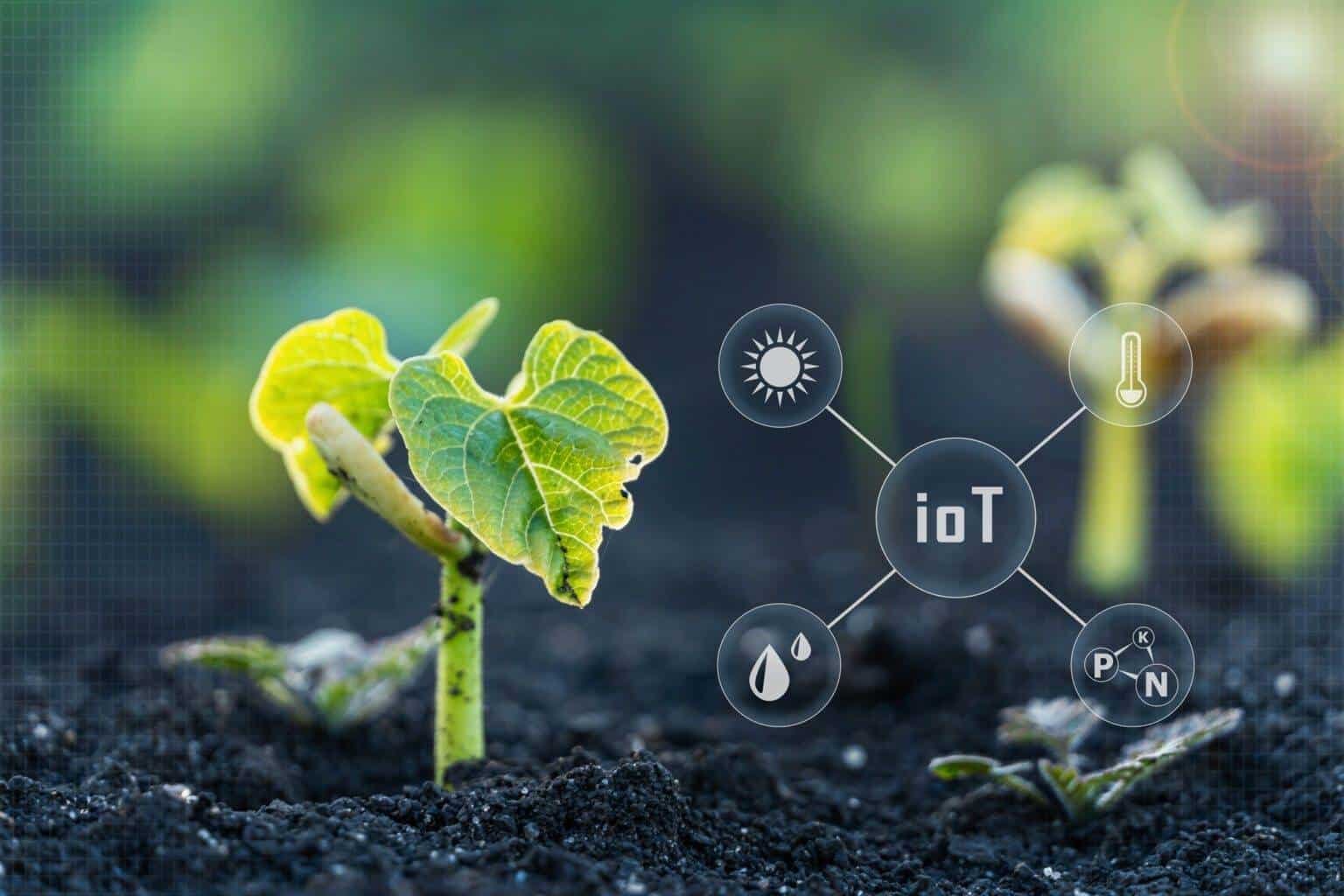
Enhanced Resource Efficiency
IoT-driven precision agriculture dramatically improves resource utilization efficiency. Water conservation represents perhaps the most critical benefit, given increasing scarcity and regulatory pressures. Smart irrigation reduces water consumption 25-50% compared to conventional methods while maintaining or improving yields. This efficiency proves essential for agricultural sustainability, particularly in water-stressed regions where farming competes with urban and industrial demands.
Fertilizer efficiency improvements deliver both economic and environmental benefits. Variable rate application based on soil sensor data reduces total fertilizer costs 15-30% while minimizing nutrient runoff pollution. Nitrogen loading in waterways—causing algal blooms, dead zones, and ecosystem disruption—decreases substantially when applications match crop needs precisely.
Energy savings emerge from optimized equipment operations. GPS-guided tractors minimize overlaps and gaps, reducing fuel consumption. Automated irrigation pumps operate only when necessary rather than on fixed schedules. Climate control systems in greenhouses modulate heating, cooling, and lighting based on actual requirements rather than conservative worst-case settings, substantially reducing energy costs.
Increased Crop Yields and Quality
Precision farming consistently demonstrates yield improvements of 10-20% compared to conventional practices. These gains result from maintaining optimal growing conditions throughout crop development. Real-time monitoring enables rapid responses to emerging problems—irrigation adjustments during drought stress, nutrient supplementation when deficiencies appear, or pest interventions before populations cause significant damage.
Quality improvements prove equally valuable. Crops receiving appropriate water, nutrients, and protection from pests and diseases produce superior products commanding premium prices. Sensor-guided harvest timing ensures produce reaches markets at peak quality. For specialty crops like wine grapes, precision management influences flavor profiles and chemical compositions, determining product value.
Consistency represents another quality dimension. IoT systems reduce variability by responding to field heterogeneity, ensuring uniform crop performance across diverse soil types and microclimates. This consistency simplifies marketing, processing, and quality assurance while meeting buyer specifications more reliably.
Data-Driven Decision Making
Agricultural IoT platforms transform farming from experience-based intuition to evidence-based management. Historical data accumulation reveals patterns invisible in single-season observations. Yield trends correlated with weather patterns, soil conditions, and management practices inform strategic decisions about crop selection, field preparation, and input timing.
Predictive analytics leverage machine learning algorithms, analyzing years of farm data, identifying relationships between variables and outcomes. These models forecast yields weeks before harvest, predict disease outbreak risks based on weather forecasts, or recommend optimal planting dates for specific field areas. The accuracy of data-driven predictions consistently exceeds human judgment alone.
Decision support systems integrate data from multiple sources—IoT sensors, weather services, market prices, and agronomic knowledge bases—providing comprehensive recommendations. Rather than overwhelming farmers with raw data, these systems present actionable advice in plain language: “Irrigate Field 3 tomorrow morning for 2 hours” or “Risk of fungal infection in Field 7 is high; consider preventative treatment within 48 hours.”
Environmental Sustainability
Precision agriculture significantly reduces farming’s environmental footprint. Chemical reduction through targeted application decreases pollution while maintaining effective pest and disease management. Studies indicate pesticide usage reductions of 30-50% when IoT monitoring systems guide interventions, benefiting both ecosystems and farm workers’ health.
Soil health improvements from optimized management practices enhance long-term productivity while sequestering atmospheric carbon. Reduced tillage enabled by precise weed control preserves soil structure and reduces erosion. Cover cropping decisions informed by soil sensors improve organic matter content and biological activity.
Water quality benefits extend beyond quantity conservation. Precise fertilizer application minimizes nutrient runoff polluting rivers, lakes, and coastal waters. Irrigation management prevents waterlogging and associated problems like nitrate leaching into groundwater. These improvements contribute to ecosystem health while ensuring agriculture’s social license to operate.
Economic Advantages
Despite substantial initial investments, IoT agriculture systems typically achieve positive return on investment within 2-5 years. Cost savings from reduced input usage—water, fertilizers, pesticides, fuel—compound annually. Yield improvements and quality premiums enhance revenue streams. Labor efficiency from automation reduces personnel costs while enabling operations to scale without proportional workforce increases.
Risk mitigation represents an often-overlooked economic benefit. Early warning systems for pests, diseases, and adverse weather enable proactive responses, minimizing damage. Crop insurance premiums may decrease as insurers recognize reduced risk profiles from precision management. Better harvest timing prevents quality losses from weather damage or over-ripeness.
Market access advantages emerge for farms demonstrating sustainable practices through IoT documentation. Certifications for reduced chemical usage, water conservation, or carbon footprint reduction increasingly influence buyer preferences and command price premiums. Traceability systems built on IoT platforms document production practices, enhancing consumer confidence and brand value.
Challenges and Barriers to IoT Adoption in Agriculture
High Initial Investment Costs
The primary obstacle deterring IoT agriculture adoption involves substantial upfront investments. Comprehensive sensor networks require dozens or hundreds of devices—each costing hundreds to thousands of dollars—plus connectivity infrastructure, computing hardware, and software subscriptions. Total implementation costs for medium-sized farms often reach $50,000-$200,000, representing prohibitive capital requirements for many operators, particularly in developing regions or for small-scale farmers.
Equipment costs include not only sensors but also GPS receivers, automated controllers, data loggers, and communication devices. Installation expenses add significantly, especially for permanent infrastructure like weather stations or buried soil sensors. Professional services for system design, configuration, and integration further increase initial outlays.
Return on investment timelines extending 3-5 years compound financial challenges. Farms operating on tight margins struggle to justify investments with delayed payback periods, particularly when competing demands for capital exist—land purchases, machinery replacement, or facility improvements often take precedence over digital agriculture investments despite their long-term value.
Technical Complexity and Digital Literacy
IoT systems’ complexity presents significant adoption barriers. Successful implementation requires sensor technologies, connectivity protocols, data management, and analytical interpretation—skill sets uncommon among traditional farmers. The learning curve associated with precision agriculture platforms intimidates potential users, particularly older farmers accustomed to conventional practices.
System integration challenges arise when combining equipment from multiple vendors. Incompatible data formats, proprietary protocols, and closed ecosystems force farmers to navigate technical obstacles or accept vendor lock-in, limiting future flexibility. The absence of universal standards for agricultural IoT complicates system design and increases dependency on specific manufacturers.
Ongoing technical support requirements add complexity. Sensor calibration, software updates, troubleshooting connectivity issues, and data quality assurance demand continuous attention. Rural areas often lack accessible technical support services, forcing farmers to develop expertise or tolerate system performance issues, undermining value propositions.
Connectivity and Infrastructure Limitations
Internet connectivity represents a fundamental requirement for IoT agriculture, yet rural areas frequently suffer from inadequate broadband access. Cellular coverage remains spotty or nonexistent in many agricultural regions, while satellite internet—though improving—presents bandwidth limitations and latency issues affecting real-time control applications.
Power infrastructure challenges compound connectivity problems. Remote sensors require reliable power sources—batteries needing periodic replacement, solar panels requiring maintenance, or electrical connections rarely available mid-field. Energy harvesting technologies show promise but currently offer limited power, insufficient for data-intensive sensors or high-frequency transmission.
Data transmission costs accumulate significantly when cellular networks provide connectivity. Monthly subscriptions for potentially hundreds of sensors create ongoing expenses, particularly burdensome in regions with expensive data plans. These recurring costs must be factored into economic analyses alongside initial hardware investments.
Data Privacy and Security Concerns
Agricultural data represents valuable intellectual property. Planting strategies, yield results, input usage, and financial performance constitute confidential information farmers rightfully protect. IoT platforms collecting this data raise legitimate privacy concerns, particularly when third-party service providers access information potentially benefiting competitors or commodity traders.
Cybersecurity vulnerabilities pose serious risks. Connected farm equipment and control systems become potential targets for malicious actors. Compromised irrigation systems could waste water resources or damage crops. Manipulated sensor data might trigger inappropriate management decisions. As agriculture becomes increasingly digital, cybersecurity threats will likely escalate, requiring robust protective measures often beyond individual farmers’ technical capabilities.
Data ownership ambiguities create additional concerns. When farmers employ vendor-provided cloud platforms, contractual terms often grant companies broad rights to aggregate, analyze, and potentially commercialize farm data. Clarifying ownership, establishing use restrictions, and ensuring farmer control over their information remain unresolved issues requiring policy attention and industry standards development.
Interoperability and Standardization Issues
The agricultural IoT landscape remains fragmented across numerous vendors offering proprietary solutions. Sensor manufacturers, software developers, equipment producers, and service providers often employ incompatible technologies, forcing farmers to choose between vendor lock-in or expensive custom integration projects. This lack of interoperability inhibits optimal system design where best-of-breed components from different suppliers work seamlessly together.
Data format standardization remains elusive. Different platforms represent identical information—soil moisture readings, temperature measurements, and GPS coordinates—in varying formats requiring conversion for integration. While efforts toward standardization exist, adoption progresses slowly due to competitive dynamics and technological diversity.
Open-source alternatives offer partial solutions but introduce other challenges. Community-developed platforms may lack commercial support, documentation, or user-friendly interfaces expected from proprietary products. Farmers must balance the flexibility of open systems against the convenience and reliability of commercial offerings.
Future Trends and Innovations
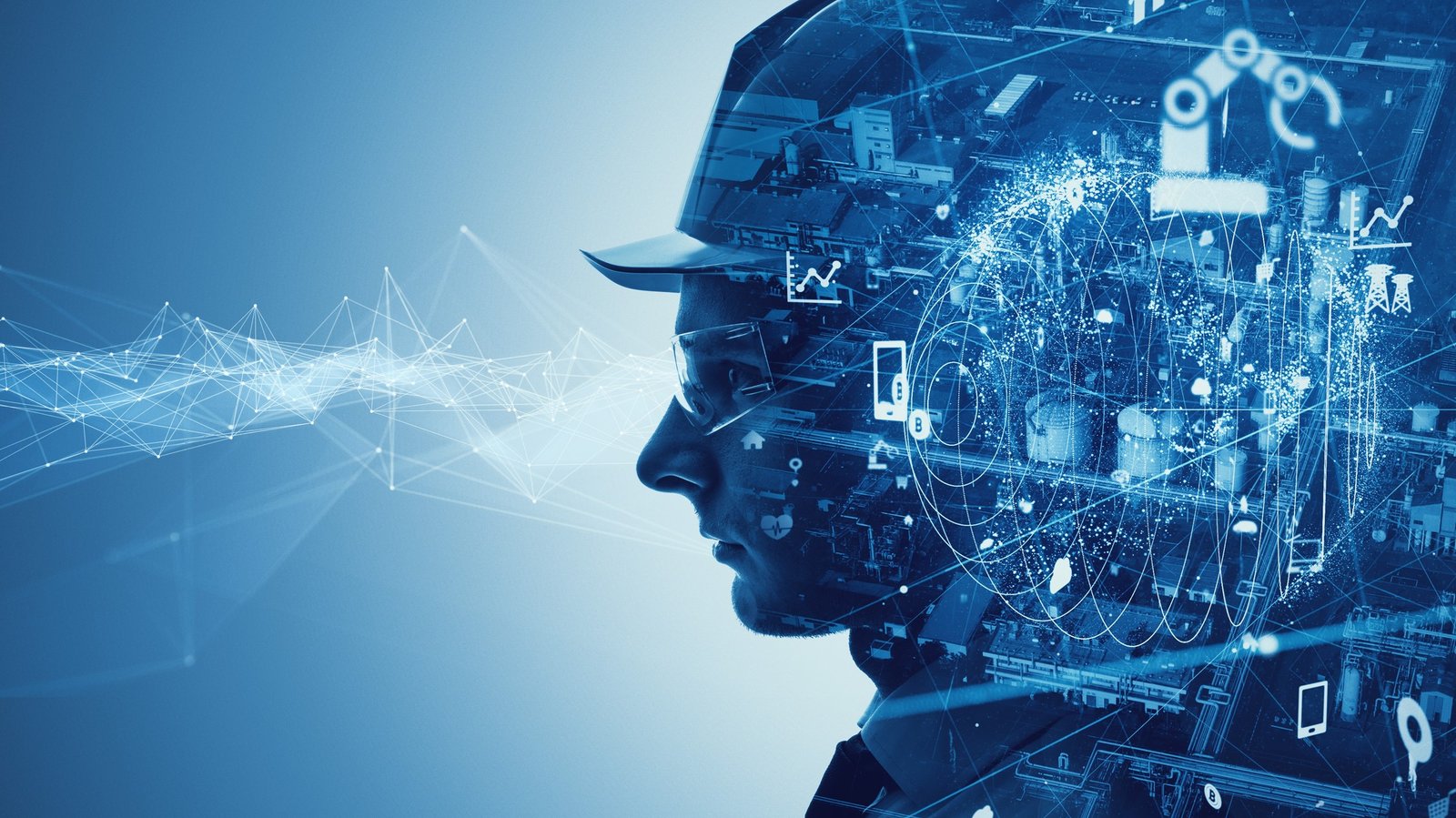
Artificial Intelligence and Machine Learning Integration
The convergence of IoT sensors and artificial intelligence will revolutionize precision agriculture. Machine learning algorithms trained on historical farm data will predict optimal planting dates, forecast pest outbreaks weeks in advance, and recommend management interventions with unprecedented accuracy. Deep learning models analyzing multispectral imagery will detect plant diseases at the earliest stages, enabling preventative treatments to minimize crop losses.
Automated decision-making systems will increasingly operate autonomously within farmer-defined parameters. Rather than generating recommendations requiring human approval, future AI systems will directly control irrigation, apply targeted treatments, or adjust environmental conditions in real-time, responding to sensor inputs. Farmers will transition from making tactical decisions to setting strategic objectives, with AI handling operational execution.
Predictive analytics will extend beyond individual farms to regional and global scales. Aggregated data from thousands of farms will reveal macro-trends informing policy decisions, commodity market forecasts, and food security assessments. This collective intelligence benefits individual participants while advancing agricultural sustainability broadly.
Edge Computing and 5G Connectivity
Edge computing architectures process data locally rather than transmitting everything to distant cloud servers. This approach reduces latency—critical for real-time control applications—decreases bandwidth requirements, and enhances reliability when connectivity interruptions occur. Smart sensors equipped with embedded processing capabilities will perform preliminary analysis, transmitting only significant findings rather than continuous raw data streams.
5G networks expanding into rural areas will enable bandwidth-intensive applications previously impractical. High-resolution video streaming from multiple field cameras, real-time autonomous equipment coordination, and virtual reality farm monitoring become feasible with 5G’s speed and capacity. Ultra-low latency supports immediate response requirements for robotic systems and automated controls.
Satellite connectivity innovations, particularly low-earth-orbit constellations like Starlink, promise ubiquitous broadband access even in remote agricultural regions. Universal connectivity eliminates current infrastructure limitations, democratizing IoT agriculture access for farmers regardless of location. This development could prove transformative for agricultural modernization in developing countries.
Blockchain for Agricultural Traceability
Blockchain technology integrated with IoT sensors will create immutable records documenting food production from seed to consumer. Every input application, growth condition, harvest detail, and handling step recorded by sensors can be permanently stored in distributed ledgers, establishing trustworthy traceability systems.
Consumer demand for transparency regarding food origins, production practices, and quality attributes drives blockchain adoption. IoT-verified certifications for organic status, sustainability practices, or geographic indications gain credibility through tamper-proof documentation. Premium markets rewarding verified sustainable production become accessible to farmers implementing comprehensive monitoring systems.
Supply chain optimization benefits from blockchain-based coordination among farmers, processors, distributors, and retailers. Real-time visibility into product availability, quality status, and location facilitates efficient logistics while reducing waste from spoilage or mishandling. Smart contracts automatically execute transactions when predefined conditions documented by IoT sensors are satisfied.
Drone Technology and Aerial Sensing
Agricultural drones equipped with advanced sensors will become ubiquitous farm tools. Declining costs, improved battery technology, and autonomous flight capabilities make aerial monitoring accessible to operations of all sizes. Multispectral imaging, thermal sensing, and LiDAR deployed from drones provide comprehensive field assessments impossible from ground-level observation.
Beyond sensing, drones will perform an increasing number of active interventions. Precision spot-spraying of weeds or pests, targeted crop nutrient applications, and pollination assistance in high-value crops represent emerging applications. Swarms of coordinated drones might conduct large-scale operations rapidly, offering flexibility that traditional equipment cannot match.
Integration with ground-based IoT creates comprehensive monitoring ecosystems. Drones provide periodic broad-area assessments complementing continuous point measurements from stationary sensors. Anomalies detected by satellites or drones trigger investigation by ground sensors or farmers, optimizing resource allocation for detailed monitoring.
Regenerative Agriculture and Sustainability Focus
IoT technologies will increasingly support regenerative agriculture practices, emphasizing soil health, biodiversity, and ecosystem restoration alongside productivity. Sensors monitoring soil carbon levels, microbial diversity, and ecological indicators will document regenerative practice impacts, supporting farmers transitioning from conventional to regenerative systems.
Carbon credit markets rewarding agricultural carbon sequestration require rigorous measurement and verification—tasks ideally suited to IoT monitoring. Continuous soil carbon measurements, combined with documented management practices, create verifiable carbon offset credits, monetizing climate benefits from regenerative farming. This economic incentive accelerates sustainable practice adoption.
Biodiversity monitoring through acoustic sensors, camera traps, and environmental DNA analysis quantifies ecosystem health improvements from agricultural practices. Demonstrating positive environmental impacts enhances farmers’ reputation, meets corporate sustainability requirements, and potentially commands market premiums for ecologically responsible production.
More Read: IoT Data Analytics Turning Sensor Data into Business Insights
Conclusion
IoT in agriculture and smart sensors for precision farming represent transformative forces reshaping food production for the 21st century. By enabling unprecedented visibility into crop conditions, soil health, weather patterns, and operational efficiency, these technologies empower farmers to optimize resource utilization, enhance yields, improve quality, and reduce environmental impacts. Despite significant challenges—high costs, technical complexity, connectivity limitations, and data concerns—the trajectory toward digital agriculture appears irreversible, driven by compelling economic benefits, environmental imperatives, and technological maturation.
The precision agriculture market’s explosive growth, projected to exceed $29 billion by 2033, reflects farmer recognition that IoT-enabled farming delivers tangible returns, justifying initial investments. Future innovations in artificial intelligence, edge computing, 5G connectivity, and drone technology will further enhance capabilities while potentially addressing current adoption barriers through improved affordability and accessibility.
Success requires collaborative efforts among technology providers, policymakers, researchers, and farmers themselves, ensuring smart agriculture solutions remain practical, affordable, secure, and aligned with farming communities’ diverse needs. As global populations grow and climate challenges intensify, IoT sensors and precision farming methodologies will prove essential tools enabling agriculture to sustainably feed humanity while preserving the natural resources upon which all life depends.


